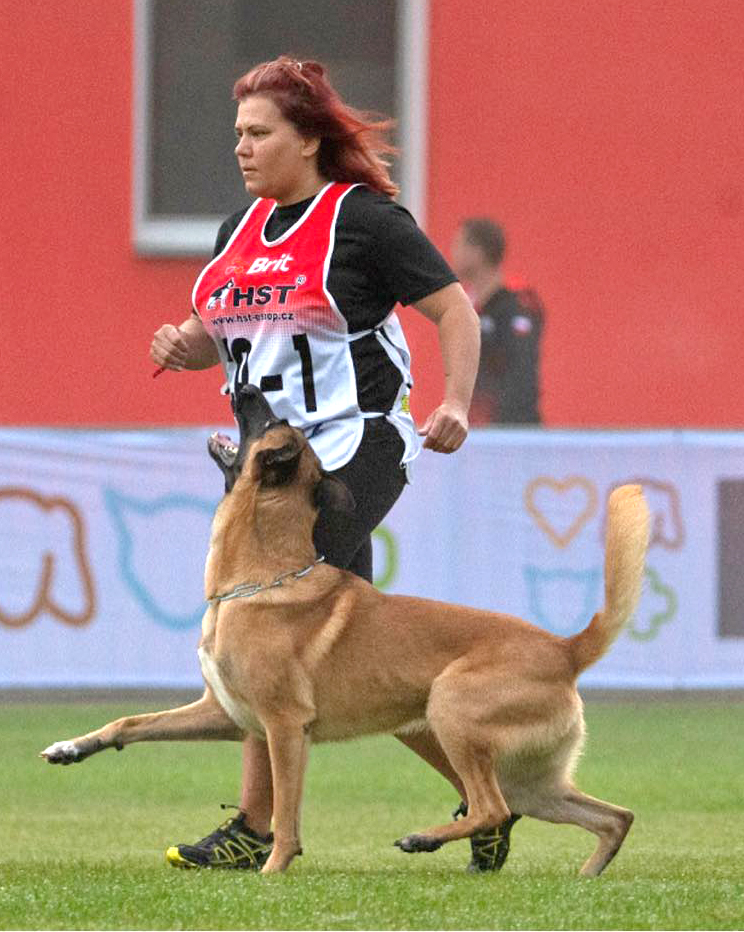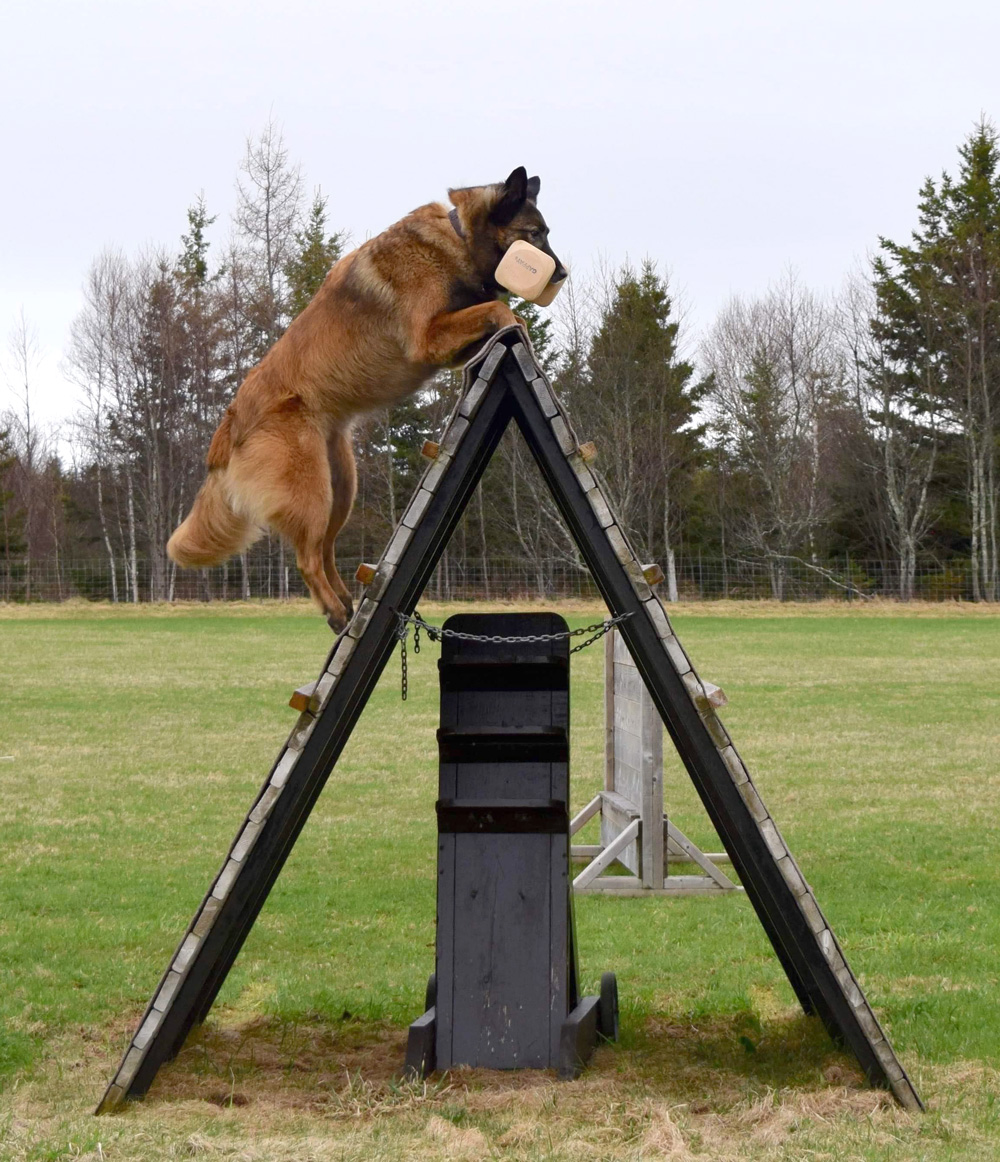IGP is an acronym for "Internationale Gebrauchshunde Prüfungsordnung", a German name meaning "International Working Dog Trial Regulations", formerly also known as "IPO" and "Schutzhund" ("protection dog" in German). Schutzhund evolved over 110 years ago in Europe as a way of testing German Shepherd dogs for their suitability for use in breeding programs.

IGP today is a sport that all working breeds train and compete in, and is a sport regulated by the FCI - Utility Dog commission (http://www.fci.be/en/Utility-Dogs-58.html).
IGP focuses on developing and evaluating dogs of all breeds for traits such as a strong desire to work, courage, intelligence, trainability, a strong bond to the handler, perseverance and protective instincts. It also tests for physical traits such as strength, endurance, agility, and scenting ability.
The goal of IGP is to illuminate the character and ability of a dog through training. Breeders can use this insight to determine how and whether to use the dog in producing the next generation of working dogs.
There are three phases of the sport: tracking, obedience and protection. Each phase is scored out of a possible 100 points, with a minimum passing score of 70. There are three levels in IGP (IGP 1-3), and each level increases in difficulty.
Dogs do not have to train all three phases in order to achieve IGP titles. There are also tracking only titles (FPr 1-3), obedience only titles (UPr 1-3), protection only titles (SPr 1-3), and advanced tracking titles (IFH1, IFH2 and IGP-FH).
Before attempting any title in IGP, the dog must first pass a BH/VT test, which is an assessment of the dog's basic obedience, temperament, and sociability.
This working dog sport offers an opportunity for dog owners to train their dog, achieve titles, and compete with each other for recognition of both the handler's ability to train and the dog's ability to perform as required. It is a sport enjoyed by persons of varied professions, who join together in a camaraderie born of their common interest in working with their dogs. Persons of all ages and conditions of life, even those with significant disabilities, enjoy IGP as a sport.
High energy dog breeds such as the Belgian Shepherd Dog also find a fulfillment in this sport that makes them happier companions to their owners.
IGP Tracking assesses the dog's ability to follow the scent in a precise manner and also tests mental and physical endurance. In IGP tracking, precision and intensity on the track, rather than how fast the track is done, is what the judge is looking for. Before beginning the track, the dog must pass a temperament test to ensure the dog is not aggressive or shy. The tracking phase (depending on the level) consists of the dog tracking the path of a person (300-600 paces) 20-60 minutes old with 2-4 turns and finding and indicating articles (3) dropped by the person on the track. The handler is at the end of a 33ft tracking line. Tracking is on some form of grass or dirt. An IFH1 or 2 is considerably more difficult.

IGP obedience assesses the dog's willingness to work with the handler in a free, happy, powerful, attentive and precise manner and also tests the dog's agility and temperament. The obedience phase increases in difficulty with each level. It includes heeling exercises, during which the dog is subjected to a gunshot test. The gunshot is to determine how the dog reacts to sharp noises. Motion exercises require the dog to sit, down, or stand during heeling while the handler continues to move forward. The dog may be required to perform a recall from these stationary positions. Retrieve exercises require the dog to retrieve dumbbells of varying weights (650 grams to 2 kilograms). The first retrieve is done on a flat surface, second one over a one-meter hurdle and third one over a 1.8 meter scaling wall. Last exercise is the send-out, where the dog must run quickly in a straight line away from the handler and down on command. There is also a down under distraction (handler away) that is performed while another dog is working. All exercises are performed off leash except in the BH test.

IGP protection asses the dog's ability to follow directions to search and confront an unknown man - the "helper" - while under total control of the handler. It requires the dog to have a balanced temperament with self-confidence, as well as agility, physical strength, and ability to switch focus from confronting a stranger to obedience with his handler. The helper wears a heavily padded sleeve on one arm. There are several blinds (2-6), placed where the helper can hide, on the field. The dog is directed to search the blinds for the helper. When it finds the helper, it indicates this by barking. The dog must guard the helper to prevent him from moving until recalled by the handler. There follows a series of exercises similar to police work, ending with the handler transporting the helper back to the judge. At specified points throughout the protection phase, the helper either confronts the dog or attempts to escape. The dog must stop the threat or the escape by biting the padded sleeve and when requested by the handler, the dog is requested release the sleeve immediately. The dog must out or it is dismissed. At all times the dog must show commitment to engage the helper and the temperament to obey the handler while in this high state of drive. Again, the dog must show enthusiasm. A dog that shows fear, lack of control, or inappropriate aggression is dismissed.